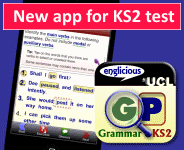Restrictive and non-restrictive relative clauses
In this lesson, we look at the difference between two kinds of relative clause. A relative clause is a special kind of subordinate clause, and like other subordinate clauses it is introduced by a subordinating conjunction. More specifically, the introduction of a relative clause can be carried out by a relative pronoun.
The two types of relative clauses we will be looking at are:
(1) Restrictive relative clauses are used to give identifying information about something and pick it out from among several possible candidates.
(2) Non-restrictive relative clauses give additional information about something that already has an unambiguous identity.
Before starting these exercises you may find it helpful to review the material on relative clauses.
Goals
- Build on knowledge of relative clauses to identify and distinguish restrictive and non-restrictive relatives.
- Be aware of the different subordinating conjunctions that can be used to introduce relative clauses.
Lesson Plan
The teacher explains that in this lesson we will look at the
different kinds of relative clause we can find in English. After reviewing the
basics on relative clauses already covered and ensuring that pupils understand
this concept, the teacher can move on to the activities. The content of each activity is given below.
Activity 1 gives an example of how we can use a relative
clause in two different ways.
Activity 2 asks you to sort some examples of relative clauses
from the ICE-GB corpus according to whether you think they are restrictive
(identifying) or non-restrictive (adding). Were there any cases where you had
difficulty deciding which reading to choose? What clues did you use to help you
decide?
Activity 3 looks at how we can use punctuation to make the
difference between restrictive and non-restrictive relative clauses clearer in writing.
Finally, Activity 4 explores the relationship between relative clauses and meaning, looking at punctuation and conjunction choices.
Welcome!

Englicious is totally free for everyone to use!
But in exchange, we ask that you register for an account on our site.
If you’ve already registered, you can log in straight away.
Since this is your first visit today, you can see this page by clicking the button below.
- Printer-friendly version
- Log in to view or leave comments

